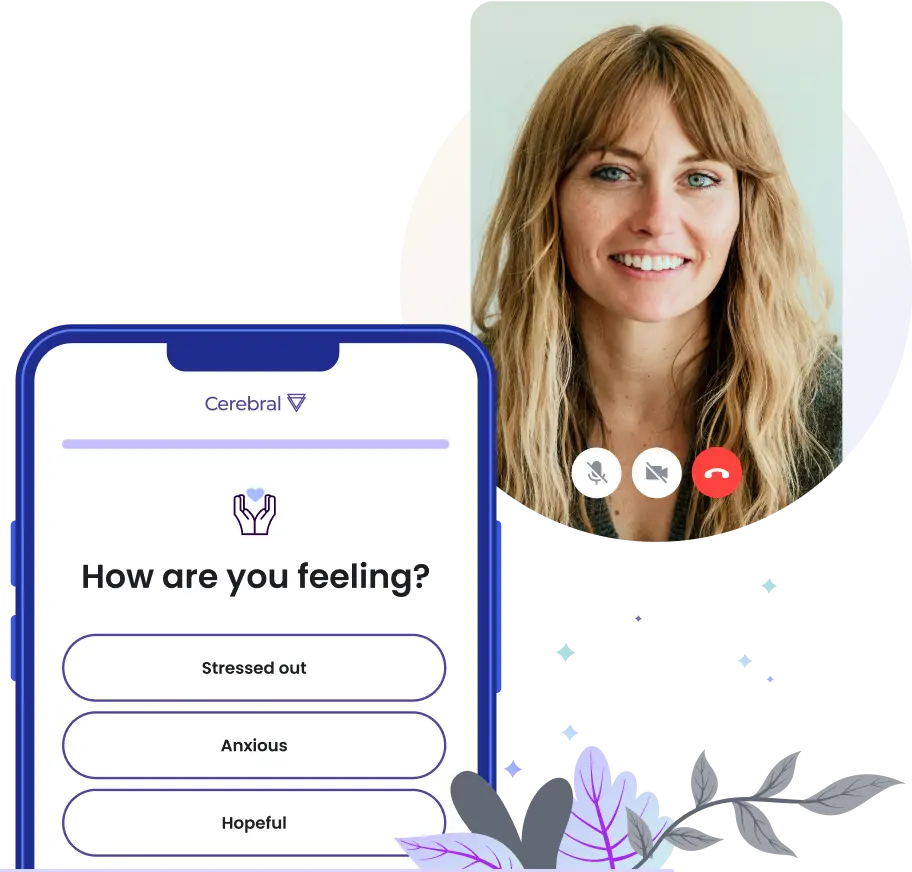Health plans are increasingly embracing value-based care, which aims to incentivize care quality and outcomes over volume. However, the same can’t be said in all areas of health care. While value-based care is becoming increasingly prevalent for physical health, behavioral health remains in the waiting room.
A major reason for this is we treat behavioral health as separate – and not as important – as physical health. That’s a mistake. According to Milliman, people with serious behavioral disorders have medical costs 10 to 15 times higher than patients without psychiatric illnesses. And healthcare spending is two to three times greater for patients with a mental or behavioral health diagnosis than for those without.
Online behavioral health provider Cerebral Inc. is taking steps to prove that a new model focused on delivering value can work. They have identified three areas needed for the move to value:
- Create a universal approach to quality metrics
- Update the technology infrastructure to track quality
- Create the right incentives to push towards quality
Universal Quality Metrics
Understanding and tracking patient outcomes is a cornerstone of value-based care. This tends to be more straightforward in physical health. There are objective gold-standards for measuring clinical outcomes. For example, a diabetic can track A1C levels to get a clear picture of how they are improving.
It’s more complicated in behavioral health. In fact, there is no objective way to measure and track progress in behavioral health. The standard way outcomes are tracked now is with subjective, patient-reported outcomes. These capture information from the patient’s perspective. They are standardized and validated, but they are not truly objective.
Furthermore, there is no general agreement on which metrics should be tracked. This results in non-standardized care from providers and inconsistent measurement of quality. For payers, employers, and other decision-makers, it is difficult to differentiate between a high-quality provider and one which prioritizes growth instead.
This problem is only compounded by the flood of new digital solutions entering the market. In 2021, new behavioral healthcare startups raised more than $5.1 billion, more than any other clinical space. But without an agreement on what metrics should be tracked, every new startup has the potential to create its own metrics and standards.
Solving this requires universal, widely-adopted quality standards for behavioral health. These standards should be specific to the diagnosis, measurable through data and involve a range of stakeholders, such as payers, providers, employers, and even patients themselves. They also need to be actionable for clinicians.
Take for example blood draws. Cerebral wanted to ensure patients on medications that require consistent blood draws for safety monitoring can get the labs completed. Using their system, they remind clinicians to order labs through notifications and educate patients about the importance of getting them. By empowering clinicians through these specific next steps, Cerebral is able to maintain a 100 percent compliance rate with lab monitoring for tens of thousands of patients.
Importantly, payors and employers must lead the way by overseeing universal quality metrics to minimize bias and create a level playing field. The highest quality providers will welcome this approach. Those that resist will likely be legacy volume-based providers.
Innovating Infrastructure
The need and utility of electronic health records (EHRs) is widely accepted as a way to reduce errors and improve quality in care. In 2009, the government passed the Health Information Technology for Economic and Clinical Health (HITECH) Act, which provided $35 billion in subsidies to incentivize providers to use EHRs. And for the most part, it worked: 86 percent of office-based physicians adopted an EHR by 2017.
But the act failed to include appropriate incentives for behavioral health professionals. As a result, many providers today still don't use EHRs, effectively putting a patient’s behavioral health data on an island, or more likely, a filing cabinet. The 1970 Confidentiality of Alcohol and Drug Abuse Patient Records statute, which requires substance abuse providers to keep records separate from other parts of a patient’s file, further exacerbates the situation.
These self-inflicted wounds, although put in place to protect patient privacy, can prevent clinicians from getting the information they need to make informed, safe decisions. In the era of rising substance abuse and suicide, this is information that could prove to be potentially lifesaving.
Behavioral health needs to widely adopt EHRs. Although there are a few currently, they are not widely used due to cost or are not sophisticated enough to track data on a scale that can bring meaningful impact.
Cerebral took on this challenge by building their own EHR. Their proprietary system can longitudinally track a range of evidenced-based clinical data and outcomes, such as clinical assessments, at scale. It can also seamlessly integrate with partners – health plans, employers, and health systems – removing claims from silos, providing unique transparency into quality, and enabling actuaries to finally be able to attribute cost savings to behavioral health.
Creating the Right Incentives
In addition to lacking the infrastructure to track outcomes and agreement on what to track, providers simply do not have the right incentives to move to value-based care.
Behavioral health providers are set up to maximize the cost per visit, not the outcomes per visit, and cash-paying customers present a more lucrative opportunity. Additionally, many behavioral health providers do not participate in insurance networks due to low reimbursement and a burdensome claims process.
Additionally, the small amount that do take insurance often segregate by specialization. For example, a patient with a substance use disorder and bipolar will need to see at least two separate behavioral health providers that do not communicate effectively. Furthermore, as providers become more specialized, access becomes more limited. Providers are simply not incentivized to treat more specialized patients, such as those with a serious mental illness, as the reimbursement from health plans is normally the same, though the provider is required to do much more work and carry more risk.
Cerebral approaches this differently. They seek to increase the amount of in-network providers and are actively adding to the amount of conditions they cover, which includes opioid use disorder and bipolar disorder. They also are partnering with health plans and employers to innovate on quality-based incentives. For example, Cerebral pays clinicians extra for engaging patients with suicidal ideation on the phone outside of scheduled appointments.
Not all providers will be ready or willing for this transition, and our health system will need to take a crawl, walk, run approach. Outcome measured incentives, such as speed to care or assessment score completion and improvement, could be quickly adopted, while total cost of care risk will take more time.
Regardless, more people are dealing with behavioral illness everyday while costs continue to skyrocket. And given the potential to dramatically improve patient outcomes and impact the total cost of care, we can expect the future of behavioral health to be value-based, with Cerebral continuing to lead the charge.

Using Data to Best Match Patients and Clinicians

Why Can’t We Talk About Suicide?

The State of Mental Health Care in 2022: Where are We?

Call 911 if you’re having a
mental health emergency
Text Home to 741-741 if you're in emotional
distress and need immediate support
Call or text 988 Suicide &
Crisis Lifeline. Chat service
is available at 988lifeline.org.